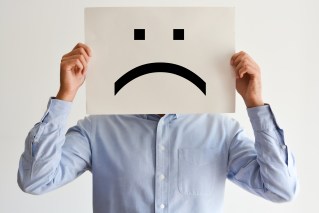The Oxford/AstraZeneca coronavirus vaccine is safe, but questions remain over its efficacy

Here we are, apparently on the brink of getting a needle in the arm to protect us from COVID-19. Early March says the government.
Does this mean life will soon go back to normal? No more masks and skimpy wedding parties? Woo hoo!
Hang on. In the past couple of days, some doctors have dropped a fly into the ointment, suggesting that the Oxford/AstraZeneca vaccine – the shot that most Australians will receive this year – should not be widely rolled out.
It’s important to point out that the safety of the AstraZeneca-Oxford vaccine is not in any doubt, but that questions remain over whether it is effective enough to lead to population-wide herd immunity and prevent transmission of the coronavirus.
Interesting article from @liammannix and @aishamae today, a lot to unpack, time for a little thread! #COVID19Aus
Scientists call for pause on AstraZeneca vaccine rollout https://t.co/Bq6bMhzyAU
— Jamie Triccas (@TricckyLab) January 12, 2021
The suggestion that the rollout should be paused was quickly shot down by everyone from chief medical officer Paul Kelly to opposition health spokesman Chris Bowen, and broad swathes of Australia’s medical and scientific communities.
So what are the naysayers’ arguments against rolling out the jab?
“You cannot rely on it to establish herd immunity,” said Immunology society president Professor Stephen Turner, who was relying on “current trial evidence”.
The situation became somewhat farcical when the Australasian Virology Society joined the no-jab fray, only to change its mind overnight and withdraw its objections to the rollout.
While this was a headache for the government, Health Minister Greg Hunt and company will get over it.
The real damage was done to public confidence. For nearly a year now, Australians have been overwhelmed on a daily basis with COVID-related information.
Finally, there was supposed to be light at the end of the tunnel.
And now some high-profile doctors area saying Australia’s vaccination strategy is a dud – and that we should have invested in the highly efficacious Pfizer and Moderna vaccines that are being rolled out in the US and Europe.
What’s really going on?
Australia has purchased 10 million doses of the Pfizer vaccine, which claims a 95 per cent efficacy rate.
The Pfizer vaccine is given in two doses, and will be used to protect will be used to protect ‘first-priority populations’ – people who are most vulnerable to getting infected and falling seriously ill.
These include frontline healthcare workers, quarantine and border workers, and aged care and disability care workers and residents.
We’ve known since November that Australia cannot manufacture the Pfizer or Moderna vaccines because they are based on new ‘messenger RNA’ technology.

The AstraZeneca vaccine generated much excitement when it was trialled in the UK. Initial handing of trial data, though, muddied the waters.
We also don’t have the infrastructure to reliably deliver them in mass quantities because they need to be kept in ultra-cold conditions akin to an Antarctic winter. (The Pfizer vaccine needs to be kept at minus 80 degrees Celsius.)
And as the The New Daily reported, the federal government is simply unable to secure more doses of the Pfizer jab.
The AstraZeneca/Oxford vaccine, however, is cheap, easy to handle and can be made in Australia.
Local company CSL started making the vaccine in November. It simply awaits approval from the Therapeutic Goods Administration (as does the Pfizer jab).
There are 53.8 million doses of the AstraZeneca vaccine on order. It, too, requires two injections per person, given several weeks apart.
So what’s the problem?
A headline from The Australian sums up the panic: ‘‘Vaccine ‘not good enough to stop the coronavirus’.’’
Is it true? The fact is, we don’t know for sure how well the AstraZeneca vaccine works.
The complaints from doctor groups is based on data from an interim report published in The Lancet in early December.
The researchers concluded the vaccine was “safe and efficacious … if deployed with high coverage.”
But, as The New Daily reported, the numbers were tricky.
Oxford/AstraZeneca claimed to have produced a vaccine with an efficacy of up to 90 per cent. Better still, it could be had “for the price of a cup of coffee”.
Then it was revealed that the overall efficacy of the vaccine was 70.4 per cent. So … what did these numbers mean?
In effect, there were three trials. Two groups – one in the UK, one in Brazil – were given two standard doses, a month apart, with OK results.
The UK trial had an estimated 60.3 per cent efficacy; the Brazil trial had an estimated efficacy of 64.2 per cent. Averaged out, the combined efficacy was 62.1 per cent.
In a third trial of about 3000 people in the UK, participants were accidentally given a half-strength dose in the first injection.
When it became clear that side effects such fatigue and headaches were milder than expected, the mistake was revealed.
On the upside, when the participants received the second full-strength injection, 90 per cent of the group were protected against the virus. However, none of the participants were older than 55.
The problems remaining are these: The extent to which the vaccine reliably works, especially in older people, remains unclear; the range of efficacy data from three trials is significant; and the manner in which the company managed disclosure of a mistake in one of the trials has led to a feeling the company can’t be entirely trusted.
At the time, The New Daily concluded: “… with the company having seriously muddied the water in the meantime, Australians deserve a clearer understanding of the vaccine’s reliability before proceeding taking it in the arm en masse.”
A month after this mess became apparent, Australian doctors have seized upon that 62.1 per cent efficacy rate to claim the government has bet the farm on the wrong horse – and we should buy up the Pfizer or Moderna jab instead.
Except we can’t for reasons outlined above.
Canada just doubled its order of the Pfizer mRNA vaccine from 20M to 40M doses. Why can’t Australia also negotiate increased supply of high-efficacy #COVID19 vaccines? https://t.co/pRuQBnRm28
— Benjamin Veness 😷 (@venessb) January 13, 2021
What a pickle. Could AstraZeneca redeem itself?
According to Melissa Millard, a spokeswoman from AstraZeneca, there are are four issues to keep in mind:
- Trials are continuing to establish the optimum dose. It may be that, as found in the accidental discovery, that a half dose reliably facilitates a 90 per cent efficacy rate. Further trials on dosage could possibly improve that result
- A fuller data set than that found in the Lancet interim report has been submitted to the TGA. It’s not yet publicly available. And more data is being continually generated
- Any approval from the TGA will be provisional, as it will be for the Pfizer vaccine, “because it’s based on an extraordinary set of circumstances”
- Second and third-generation vaccines are expected to eventually replace those being deployed this year.
People in the UK are already receiving the AstraZeneca vaccine, which is being described as “central to the government’s plans for ending social distancing in the UK and returning to some sort of normality”.
The UK has “invested in seven different vaccines, but the biggest order is for 100 million doses of the AstraZeneca jab, most of which will be manufactured in the UK”.
The World Health Organisation has optioned up to 900 million doses.
Is there another option?
Australia has ordered 51 million doses of the dark-horse Novavax vaccine.
The company is a small, innovative vaccine maker based in Maryland that has never brought a vaccine to market.
When the pandemic took hold, it quickly emerged with a vaccine made from moth cells that appeared to knock out the the coronavirus spike protein.
It reportedly “outshone major competitors on key measures in monkey and early human tests”.
Novavax twice delayed its Phase III trial that is meant to prove efficacy on a big scale. The company began enrolling participants in late December. Interim results are said to become available in the first half of 2021.
Meanwhile, some hard data is to become available from a Phase IIb trial in the next fortnight.
One problem: It relies on contract manufacturers to meet its target of a billion doses.
As The New Daily reported on Thursday, CSL – the Australian company manufacturing the AstraZeneca vaccine for local use – could possibly end up manufacturing the Novovax vaccine. But it can’t make both at the same time.
For the moment then, AstraZeneca – with all its unknowns – is pretty much our only option to protect most of the population from becoming seriously ill. Which it appears to do.
On Thursday night, a statement from the Australian Academy of Science said:
“In preventing severe COVID-19 that requires hospitalisation, both the AstraZeneca and Pfizer vaccines are equally effective.
“Accordingly, the Academy supports the current Australian Government vaccination strategy, informed by the best available expertise and science.”








